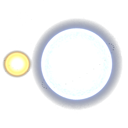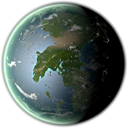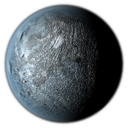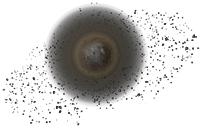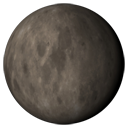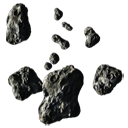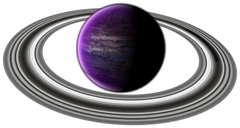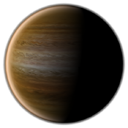Harr(Star System)

|
The following text was google-translated from Russian with minimal edits. It might appear badly written, hard to follow, or can have translation errors. This is a temporary solution, proper translation should replace that, eventually. If you'd like to help me with that, please check this article for details. |
|---|
Harr is a binary star in the L12 square of galactic map. This solar system is the home of Raharrs, and the largest known astroengineering project of the Ancients.
System map
Stars
- Orbit radius: 0.29 a.e.
- Handling time: 24 days
- Radius: 2,205,000 km and 275,000 km
- Number of satellites: 0
The stars of the system, the white star and the yellow dwarf (spectral types A1 V and G2 V). Both stars are relatively close to each other, but because of the effects of stabilizers, they remain fairly stable in terms of activity, and the orbits of the planets of the system are not too distorted, which could lead to destabilization of the orbits of the planets. Because of stabilizers, the gravitational fields are distorted, as a result of which two suns behave like one celestial body. Both suns rotate around their center of mass at a distance of 0.29 AU. from each other.
Stabilizers
Objects of unknown composition, are among the most massive artifacts of the Ancients. Apparently, their task is to control and control the stars of the system, in order to ensure comfortable living conditions in the planetary system. They rotate at such a close distance from the stars that they are actually inside the corona, on the very border of the transition zone. In this regard, any study of these objects in the foreseeable future is not possible.
Hirr
- Orbit radius: 0.9 a.e.
- Circulation time: 0.34 years
- Planet radius: 4,600 km
- Number of satellites: 0
The first planet in the system. Because of its too close location to the suns, like hell. The surface is constantly fired by powerful radiation, the gravitational effects of the attraction of the suns and their distortions caused by the Stabilizers, do not allow the tectonics to subside, so that the entire planet resembles a solid ball of magma. There is nothing on the fields of rocks covered with ash and lava-filled fields that even remotely resemble organic matter. Emissions of toxic and toxic gases give the planet a small atmosphere, in which, however, no creature known to science could live. The average surface temperature varies due to the ellipticity of the orbit and depends on the position of the planet in orbit - from +500 degrees Celsius in aphelion to +800 degrees in perihelion. Gravity - 0.8 Earth
Harr
- Orbit radius: 6.5 a.e.
- Circulation time: 6.78 years
- Planet radius: 7,000 km
- Number of satellites: 3
Homeland raharr. The second planet of the system, located just at the beginning of the "zone of life" of two stars. Earth-like planet, the ratio of land to water is about 30 and 70 percent. The atmosphere is nitrogen-oxygen. Two suns, as well as the admixture of gases give the sky on the planet a green tint, turning into orange and gold during sunrises and sunsets. The climate is mainly tropical and temperate, the circumpolar region is very small and almost immediately passes into the polar. The planet has three satellites orbiting the planet for 31.30 and 29 days. Gravity - 1.1 Earth.
Hilor
- Orbit radius: 8.5 a.e.
- Treatment Time: 10.12 years
- Planet radius: 8,000 km
- Number of satellites: 1
Hylor is the third planet of the system, located almost exactly in the center of the zone of life. However, for some reason, there is currently a deep ice age on it. surface temperatures range from +5 to -60 degrees Celsius. The sea is covered with a crust of ice, in a liquid state there is practically no water on the surface of the planet at all. Despite this, there is a stunted and poor biosphere on the planet, somehow adapted to the harsh conditions, mostly accumulating around active volcanoes, spewing valuable heat and melting ice. Theoretically, under a layer of ice from the oceans, near the bottom, there can be a more diverse life. However, no attempts were made to penetrate under the crust. For rakharr, the planet is of no interest as an object of colonization, due to too low temperatures on the surface. Gravity - 1.5 Earth
Enor
- Orbit radius: 14.3 a.e.
- Handling time: 22.09 years
- Planet radius: 5,900 km
- Number of satellites: at least 7200 (0)
The most miserable planet of the system. By cosmic standards, literally just — no more than a couple of thousand years ago — survived a destructive collision with another celestial body. Now it is a small planetoid with extremely inhospitable conditions for life. "Atmosphere" is a suspension of dust and some gases. The surface, on which the giant crater from the collision is clearly visible, is constantly bombarded by debris circling around the planet in abundance. As a result, no landings on this planet were undertaken in view of the extreme danger and complexity of maneuvering in the cloud of the planet’s debris. The exciting fact is that the planet is in the zone of the life of a star, and according to scientists' estimates, life could be on it with a high probability. Several times there were sensational reports that asteroids containing traces of processing were found in the wreckage, or even entire preserved buildings, but none of these statements received any confirmation, or turned out to be falsification. At the moment, at least seven thousand large fragments rotate around the planetoid, and countless fragments with a diameter of tens of meters or less. All of them will return to the planet extremely quickly - within the next thousand years, if not the next centuries. Gravity - 0.4 Earth.
Raos
- Orbit radius: 25.3 a.e.
- Handling time: 51.99 years
- Planet radius: 8,100 km
- Number of satellites: 0
The fifth planet of the system is a relatively boring sight. It is a brownish planetoid, almost without atmosphere, without life, containing a small amount of rare-earth heavy elements that are mined by several mines. Despite the fact that the planet was the last to form, it cooled down very quickly, as it turned out to be deprived of heavy elements, which prevented it from issuing a full-fledged core and magnetosphere. Because of this, in spite of its size, gravity is quite low on it - 0.9 terrestrial.
Asteroids
- Orbit radius: 29-40 a.e.
- Treatment Time: ---
- Radius: from 20 m to 400 km
An asteroid belt is located between Raos and Gaulurr, which does not represent anything extraordinary, except for its density - the estimated total mass of the asteroid field could be 97% of the mass of the planet the size of Harr.
Perhaps the belt was formed by itself, or it is the remains of a building material left by the Ancients here.
Resources are being extracted in the belt, especially of rare-earth elements.
Gaulurr
- Orbit radius: 54 a.e.
- Handling time: 162.11 years
- Planet radius: 106,400 km
- Number of satellites: 143 (8)
The largest and most massive planet of the system, also called the most beautiful by many. It has the largest number of satellites - 8 planet-like bodies, and more than one hundred and forty captured asteroids and cometary nuclei, which are inferior satellites. Bright violet-purple color is determined by the composition of the atmosphere. Gaulurr is an extremely active planet with the most violent winds - the speed can easily reach thousands of kilometers per hour or more. The only gas giant in the system having a wide and well visible dust ring. The planet contains several research probes, and an extensive network of industrial gas extractors producing Hephrene - a very important for space travel gas, which runs sublight engines and reactors, and which provides the planet with its unique purple color. Gas deposits are truly colossal, the hephrene constitutes approximately 85% of the mass of Gaulurr. It is estimated that at least 70% of all the hephrene explored in the Galaxy is concentrated on Gaulurr, as well as this is the only deposit in which hephrene can be detected visually. This makes Harr one of the most important solar systems of the Alliance.
Hreot
- Orbit radius: 95.5 a.e.
- Treatment time: 381.25 years
- Planet radius: 64,800 km
- Number of satellites: 67 (5)
The smallest gas giant of the system, in size and properties most reminiscent of Jupiter. There is evidence that in some areas of the atmosphere there are favorable zones with acceptable gas composition, temperature and pressure, in which life exists. Basically, these are huge and sluggish airship-like creatures called gas-eaters, adapted to survive solely on the absorption and processing of gases and the absorption of ultraviolet radiation.
Harot
- Orbit radius: 154 a.e.
- Treatment Time: 780.71 years
- Planet radius: 84,300 km
- Number of satellites: 43 (4)
The most distant planet of the system, the second largest gas giant. Consists mainly of hydrogen and helium, as a result, has a rich blue color.
Harot, like Khreot, was considered dull stars for a long time after its discovery, because of its extremely long orbital cycle (both planets have not managed to make two orbital coils since their discovery). The status of the planets was confirmed only after the development of technology allowed for a fairly accurate triangulation of the distance to them.
| Leaving the Cradle | The Cliff World | ||||||
|---|---|---|---|---|---|---|
| Species |
|  | ||||
| Organizations | Alliance | Independent Worlds | Science Corporation | Politics | |||||
| Technologies | Hephrene | Interstellar Travel | Spaceships | |||||
| Places | Planet Harr (Star Harr) | "Shining" Space station | "Dawn" class spaceships | Artifact X | |||||
| Characters | Gharr | Zane | Hekaht | Ahshu | Quantum | Nea | Dan | Mark | Val | ! Virus | |||||
| Events | ! Overall chronology | |||||
| Further reading: | Civilization development stages | Instruments | Ideas | | ||||||

